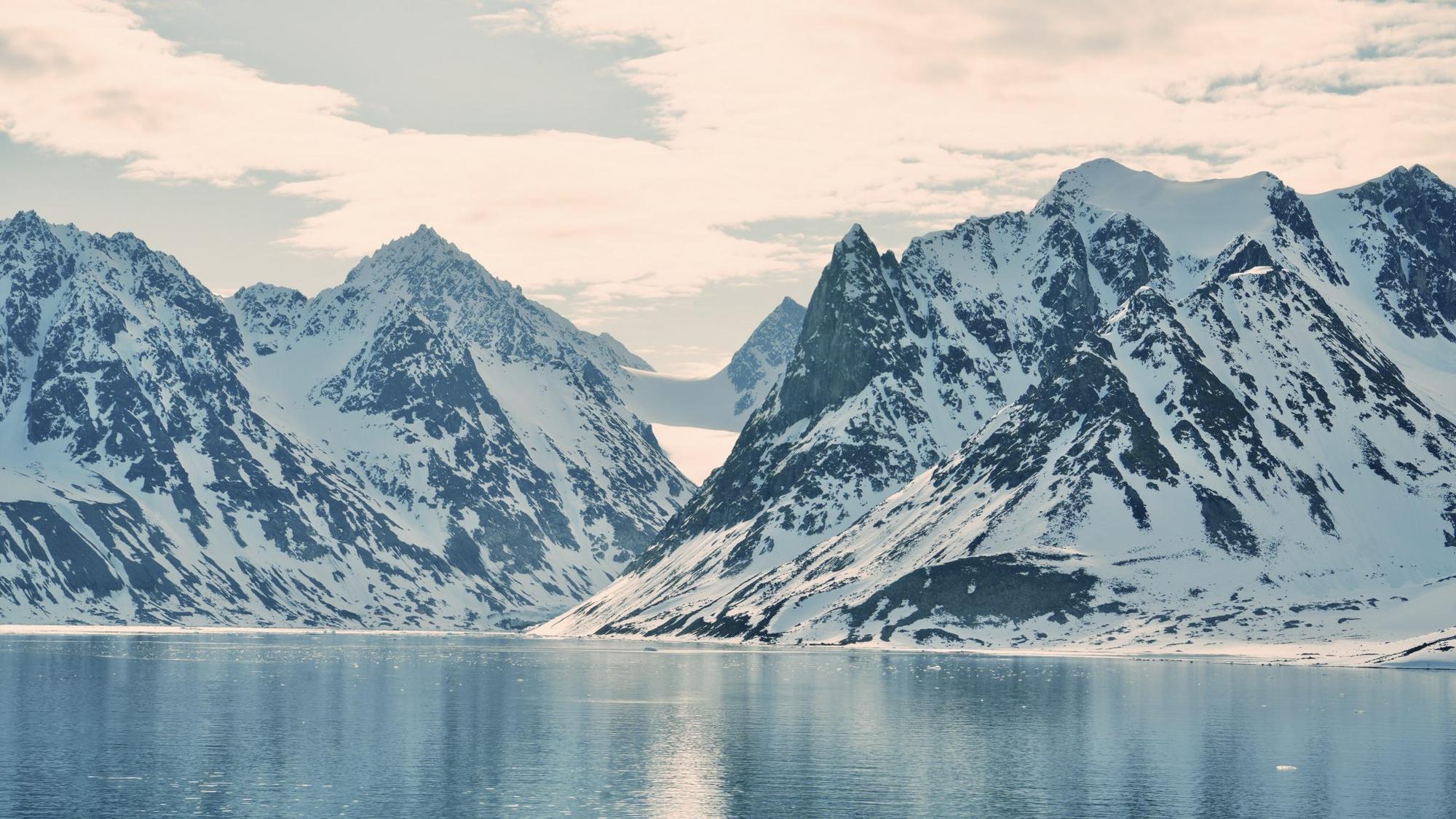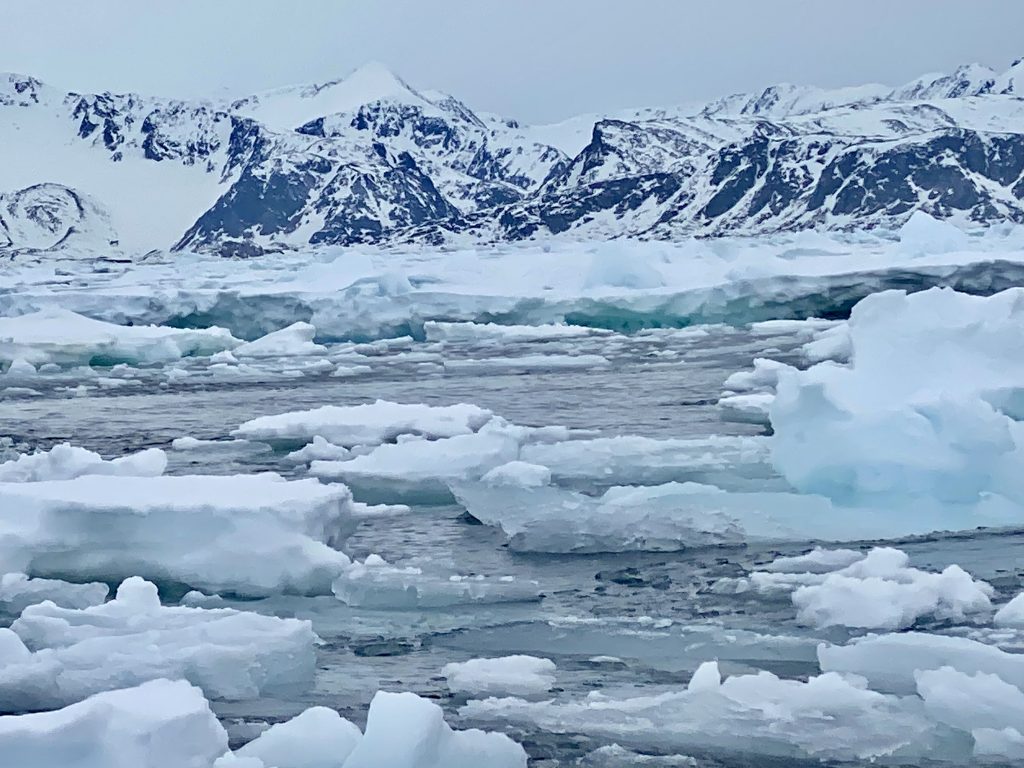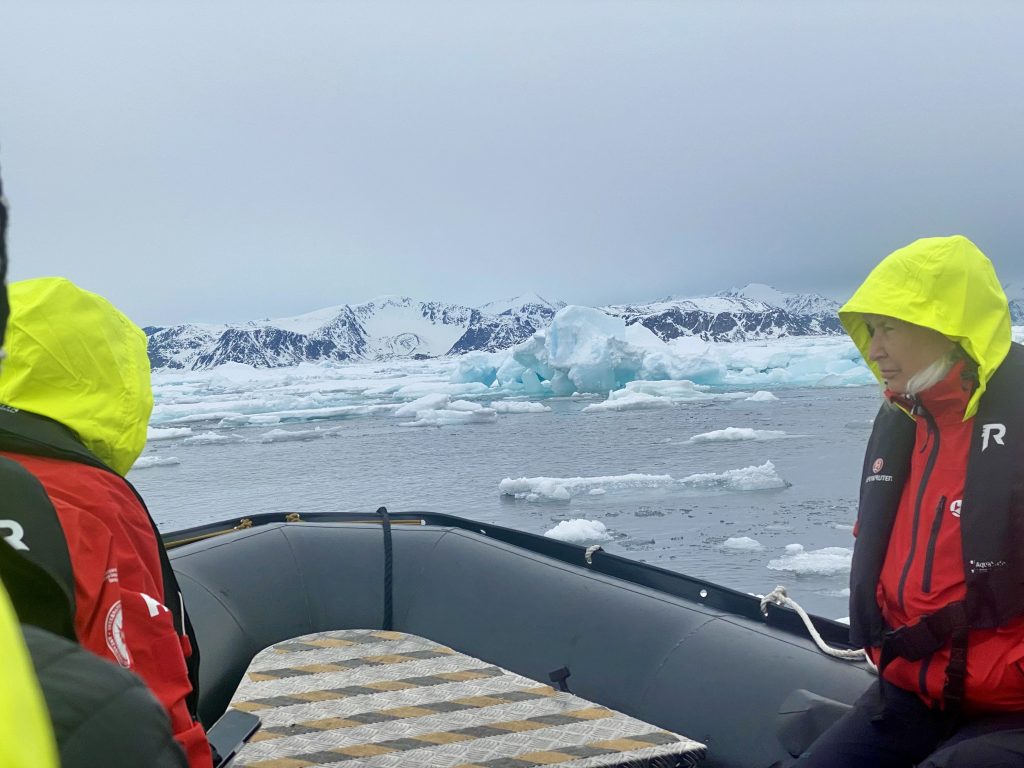Witnessing Global Warming
June, 2023

"Climate change" is a concept that originated decades ago as scientists analyzed climate records collected over many years as well as analyzing the causes, most notably the effects of the burning of petroleum products and the resulting atmospheric pollution. Just a few weeks ago, I had the experience of observing climate change in action, specifically the melting of the polar ice cap as was clearly visible in our recent Hurtigruten cruise around Svalbard, the Norway-administered islands located halfway between the top of Norway to the North Pole.

Our Hurtigruten cruise took place the second week of June under twenty-four hour sunlight. Despite this being shortly before the longest day of the year, the Summer Solstice, we experienced what felt like full winter weather, with snow flurries and blustery winds. The daily temperatures were a few degrees above freezing. Since there is twenty-four hour sunlight for three months on Svalbard, there was no nighttime at all, and thus the temperatures hovered consistently in the mid-thirties Fahrenheit/0-5 degrees Celsius, above freezing and thus accelerating the melting ice.

Our Hurtigruten cruise began with a flight from Oslo to Longyearbyen, Svalbard's single town of approximately 2500 inhabitants. Longyearbyen does not have accommodations for housing and feeding many tourists. Thus we were transported directly from the airport to the expedition cruise ship. At the initial meeting for all passengers, we were shown a map showing current ocean ice conditions. The map showed the polar ice cap extending south far enough to surround the northern coasts of the Svalbard islands. We were told that the captain did not know how far north we would be able to sail, depending on the extent of the ice cap.

Four days later as we sailed north, we discovered that during those few days the ice had receded several miles north, allowing our ship to sail north of the Svalbard coast. Our captain took our ship north directly to the ice cap, from which we sailed east along the ice border until we neared the coast where there was a large ice flow extending from the ice sheet almost to the fjord dominating the coastline. Here our ship dropped anchor in order to launch the "Zodiacs", the rubber boats which hold up to ten passengers, used for transporting passengers on excursions along the Svalbard coast. The plan was to launch the Zodiacs among the icebergs.

Here is the dramatic ice melting that I witnessed: In the morning as the ship arrived, a large icy finger of the ice cap extended almost to the land. But over the course of a few hours, this ice flow broke up into small icebergs. The ice cap was melting and receding before our eyes! The resulting small icebergs would soon melt as they were buffeted by the waves, breaking down into ever smaller pieces that would soon melt.

It is predicted that in a few years the ice cap that covers the North Pole will melt completely during the summer months. While the accessibility of a "northern passage" will be good for shipping freight through the Arctic, it is a sobering example of climate warming on a global scale. As we were informed during our initial meeting, the polar ice cap is receding at a rate of several miles every day during the twenty-four hour sunlight that has raised the atmospheric temperature consistently above freezing. The melting of the ice cap will continue until the Fall, at which point temperatures will fall below freezing during the night.

We were told that it is difficult to maintain the accuracy of Svalbard maps. The maps record the presence of the hundreds of glaciers along the coastline. However, within a year or two one finds that the glaciers have all receded, opening up many of the fjords that were previously filled with ice. One hears of glaciers melting around the world, from Switzerland to the Himalayas, to Montana's Glacier National Park, which is gradually losing all its glaciers.

On our Viking world cruise last year (2022), we observed the glacial melting along the Chilean coast. A bit of trivia I learned then: The Andean ice cap (extending from Chile and Argentina to the tip of South America) is the world's third largest ice cap, after Antarctica (#1) and Greenland (#2). I happened to capture a clear example of a glacier that had receded from sea level to far up the mountain. There was a large waterfall flowing from beneath the glacier that revealed the ongoing melting.
Perhaps the worst effects of climate change will not take place in my lifetime. Cities threatened by rising ocean levels, such as Miami, New Orleans, New York, and Los Angeles, might be able to create barriers like those that have been constructed in Holland, much of whose land is below sea level. But the climate trend is clear. It is said that it will take many centuries for the ice caps to recover to the extent that they existed only a hundred years ago. People and companies who profit from the fossil fuel industries spread propaganda that denies the eventual pending harm that global warming threatens. Personally, I had accepted the warnings from scientists for a long time. But witnessing the ice melting rapidly before my eyes personalizes and confirms the scientists' warnings. People who deny climate change in spite of the clear evidence are simply willfully ignorant.

0 Comments on Witnessing Global Warming
Join the Conversation